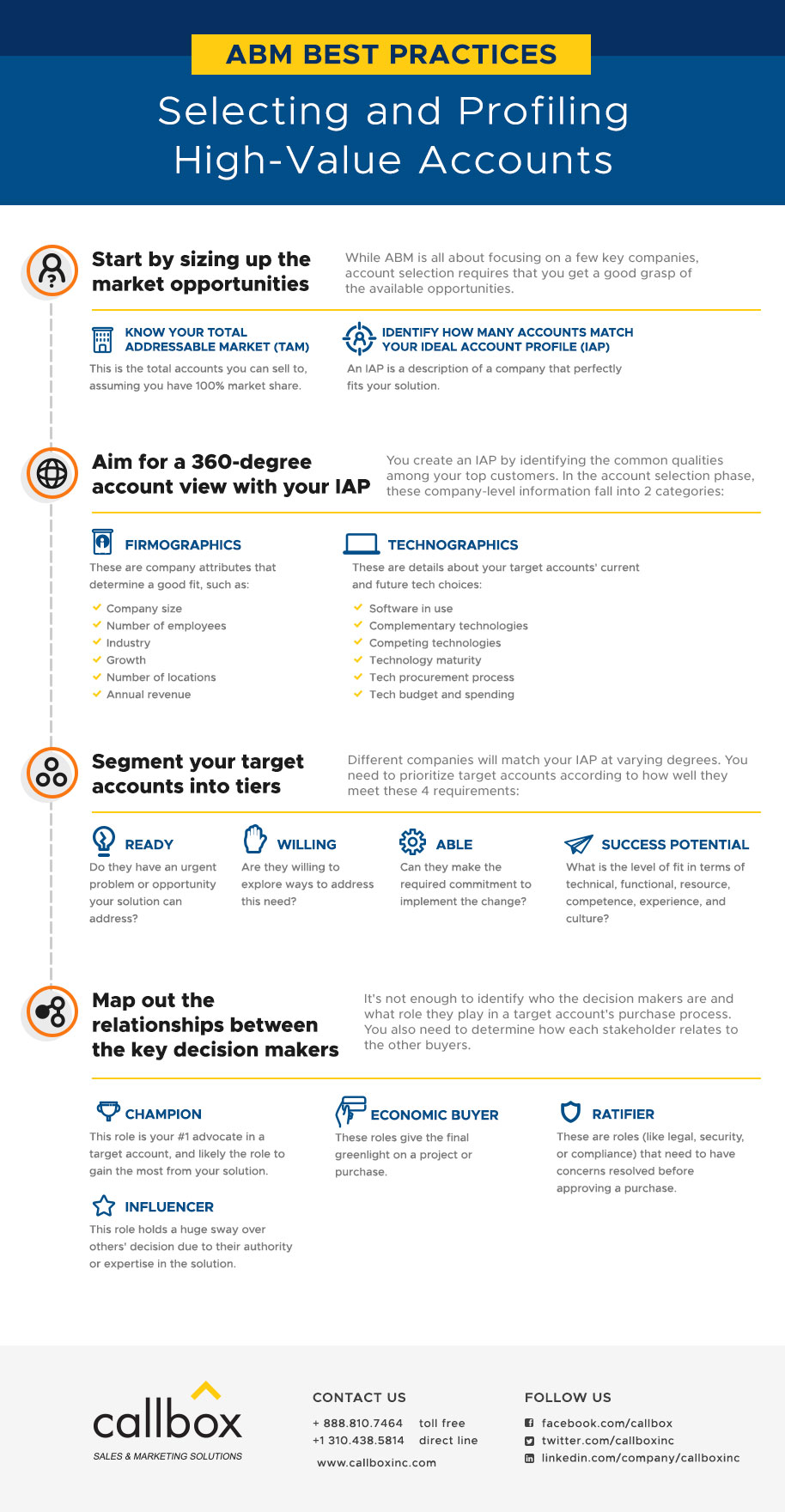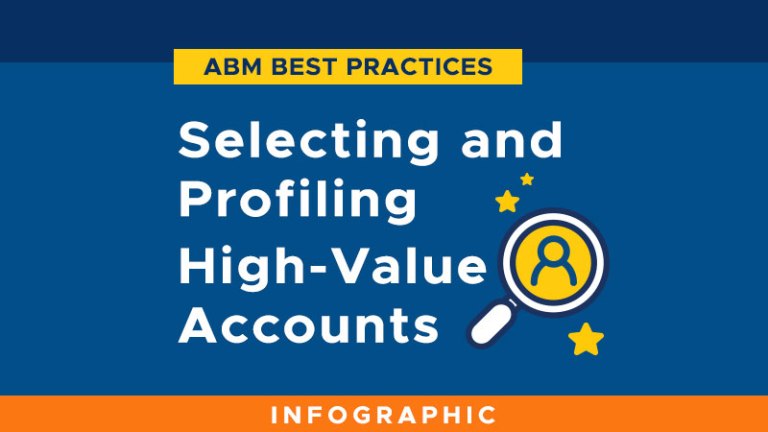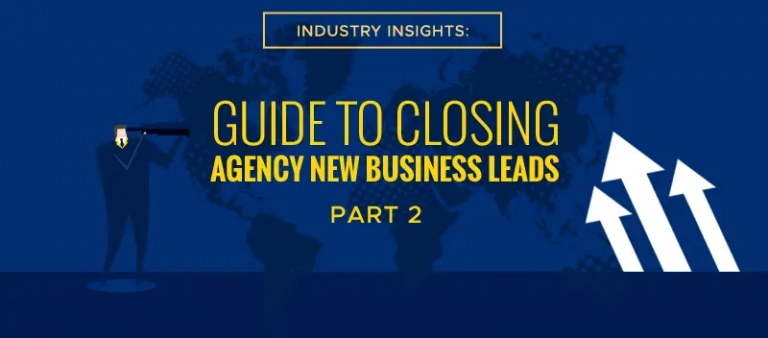If we peel back the many layers of an account-based marketing (ABM) strategy, we find that ABM simply means identifying a handful of potential companies that will likely have a huge impact on revenues, and then applying marketing programs uniquely suited to each individual account.
But how exactly do you decide which accounts to target?
The success of ABM programs greatly depends on proper account selection and customer profiling. In fact, most ABM experts consider account selection as the single most important step in the ABM process.
Without an effective account selection procedure, the other ABM components (like engagement strategy, content plan, etc.) simply won’t work.
We recently put together a quick visual guide that maps out the key ideas behind account selection, so that you can develop and refine your own approach:

Account selection is the set of activities for identifying and prioritizing potential companies to include in your ABM program, while account profiling is the procedure for finding out which decision-makers are involved in the buying process and determining how each decision-maker influences the purchase.
Account selection and profiling cover a lot of details (and these vary from one ABM plan to another), but the main things to take into account include:
Size of Market Opportunity
ABM is all about narrowing down your marketing and sales focus down to a few high-impact potential customers. But, before you can identify your ideal accounts, you first need to get a good grasp of the total opportunities available in your target market.
In an article for B2B Marketing.net, Mike Boogaard recommends paying attention to two critical numbers:
- Total Addressable Market (TAM) – the total number of companies in your target market
- Minimum Viable Accounts (MVA) – the minimum number of ideal target accounts needed to reach your ROI objective
Find the difference between enterprise sales vs. SMB sales in this quick infographic and learn how to tailor your selling strategy accordingly.
Ideal Account Profile (IAP)
An ideal account profile (IAP) outlines the characteristics of a company that perfectly fits your solution. It describes what your ideal account looks like so that you’ll unmistakably know which organizations to target and which ones to avoid.
While IAPs can be as simple or complex as you need, the best approach for defining IAPs for account selection is to focus on firmographics (company-level information that determines fit) and technographics (details about an account’s tech choices).
Additional categories like predictive and behavioral attributes can usually be included in later ABM stages.
Segments
Segmenting potential accounts into tiers allows you to prioritize candidates and customize your engagement strategy accordingly.
In a full-fledged ABM program, you need to give each account in-depth research, personalized content, tailored campaigns, and one-on-one touches.
But not all candidate accounts require this level of attention. In fact, it makes sense to provide the full ABM treatment only to your “best” target accounts.
That’s why you also need to segment accounts into tiers (e.g., Tier 1 for high priority, Tier 2 for medium priority, and Tier 3 for low priority).
One way to determine which tier a target account belongs to is to gauge how well the company meets the Ready, Willing, Able, and Success Potential criteria outlined by Sixteen Ventures:
- Ready – The target account is currently facing an urgent problem or opportunity that your solution can address.
- Willing – The company is open to exploring possible solutions to the problem or opportunity.
- Able – The target account can make the needed commitment to implement the change.
- Success Potential – There’s a high level of fit in terms of technical, functional, resource, competence, experience, and culture.
Section 2 of our Targeted Marketing Handbook includes checklists and worksheets for building more sophisticated lead scoring/segmentation models.
Buyer Roles
A Typical B2B purchase decision now involves an average of 6.8 stakeholders. These decision-makers often fall into one or more of the following buyer roles:
- Champion (or Coach) – This role is your biggest advocate in the target company and can provide you with insights on the process and the people involved.
- Influencer – Because of his/her authority or experience in the solution in question, this decision maker has a huge impact on how the rest of the buyers will decide.
- Economic Buyer – This role gives the final decision in a purchase and typically holds the exclusive authority to commit funds for the purchase.
- Technical Buyer (or Ratifier) – These are decision makers with special concerns (security, compliance, legal, etc.) in a purchase.
Knowing which decision maker fills what buyer role forms only one step in account profiling. You also need to understand and map out the relationships between these decision-makers.
Check out our guide on how to identify and qualify B2B decision-makers and start building solid vendor-client relationships.
The Takeaway: Account selection isn’t only the first step in the ABM process. It’s also the foundation of ABM success. So, be sure to build a solid account selection and profiling plan before anything else.




